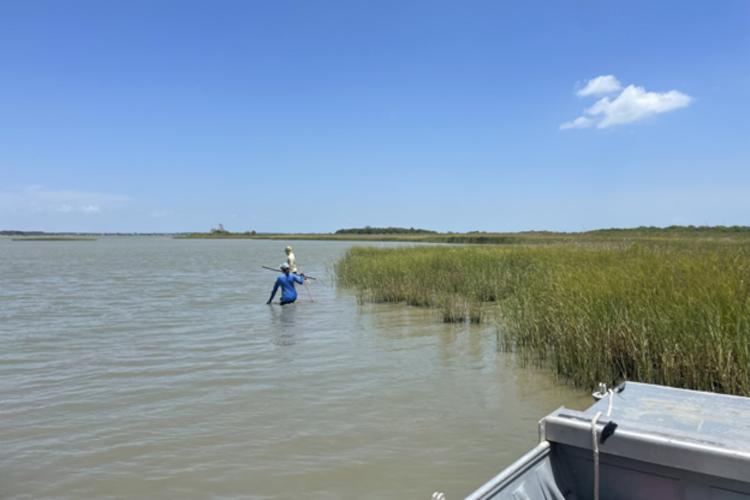As part of my internship with the Southeast Fisheries Science Center I conducted a project that produced a snapshot of pH variability in salt marsh ecosystems to provide a better understanding of the optimal pH range for oyster growth. With this information, the goal is to help inform site selection for oyster aquaculture and restoration efforts by targeting areas in the marsh where oysters grow the largest and fastest. The project revealed some surprising findings which provide valuable insight into oyster fisheries.
The Surprises
I was genuinely surprised by how variable pH was (7.1–8.4) in a salt marsh estuary over the course of one day. I was also surprised by the minimum pH values (7.1) measured in Galveston Bay. This was lower than the lowest values previously documented in the bay (7.6), which followed the rapid acidification event that occurred during the downpour of Hurricane Harvey. Oyster shells have been documented to dissolve after long-term exposure (~10 days) to pH levels of 7.2–7.4 . While this may seem concerning, oysters are normally only exposed to the lowest pH values for a maximum of 12 to 24 hours in a natural setting due to environmental variability throughout the day, caused by tides. For comparison, the present-day open ocean pH for the Gulf of Mexico is 8.1 with much smaller changes (~0.2 pH units) throughout the day. The extreme variability in pH experienced in coastal ecosystems offers an opportunity to better understand how organisms respond to large swings in pH. These coastal organisms should be prioritized for future studies concerning ocean acidification so we can learn how they are better adapted to these conditions.
Main Takeaways
We learned several important pieces of information from this research:
- Over short periods of time, pH is extremely variable in salt marsh estuaries.
- Measurable differences in pH within one area may be dependent on several factors, including distance from the vegetation and sediment, circulation patterns, and the abundance and productivity of resident organisms.
- Variability in pH did not have a relationship with organism diversity.
The first and second pieces of information are arguably the most important. Scientists at the center working in the Habitat Ecology Branch, including Jennifer Doerr and Matt Johnson, have been pursuing research related to coastal and ocean acidification in recent years. However, support for such studies has been scarce due to limited evidence in the scientific literature that pH is variable over small spatial scales. The research I completed provides direct justification for future research efforts on the impact of variable water chemistry on economically valuable fishery species. Ideally, this work will open the door for more research in this area on other shellfish species, like shrimp and crabs.
The Future of This Study
The goal is to continue research like this within the Southeast Fisheries Science Center. The Galveston facility has a vested interest in this research since the first leg of this work was done in their backyard. My next goal is to continue this work back at my home institution, Savannah State University in Georgia, by sampling the Georgian ecosystem using the same approach. The comparison between Savannah and Galveston is extremely relevant because both salt marsh ecosystems are dominated by Spartina species (cordgrass), which are home to many economically valuable fish species. The major differences between the two ecosystems include
- tidal influences
- proximity to industrial and human activity
- physical differences between the Gulf of Mexico and the Atlantic Ocean
Both Savannah and Galveston are major port cities, but the estuary surrounding Galveston Bay is more river-dominated while that of Savannah is more tidal-dominated. These major differences trickle down to the water chemistry, which will be measured and compared between the two ecosystems. This research is in partial fulfillment of my master’s thesis work at Savannah State University and will be expanded by incorporating additional measurements of existing oyster reefs and controlled growth experiments at sites in Georgia.
Meet the Blogger
Clöe Lemaire
Clöe Lemaire is from Jacksonville, Florida and completed her bachelor’s degree at the University of North Florida in coastal biology and French language. She is now pursuing her masters degree at Savannah State University in Georgia. Her favorite part about marine science is that everyday is a different challenge. She hopes to continue her research in habitat conservation and restoration by pursuing a career with NOAA after graduation.







